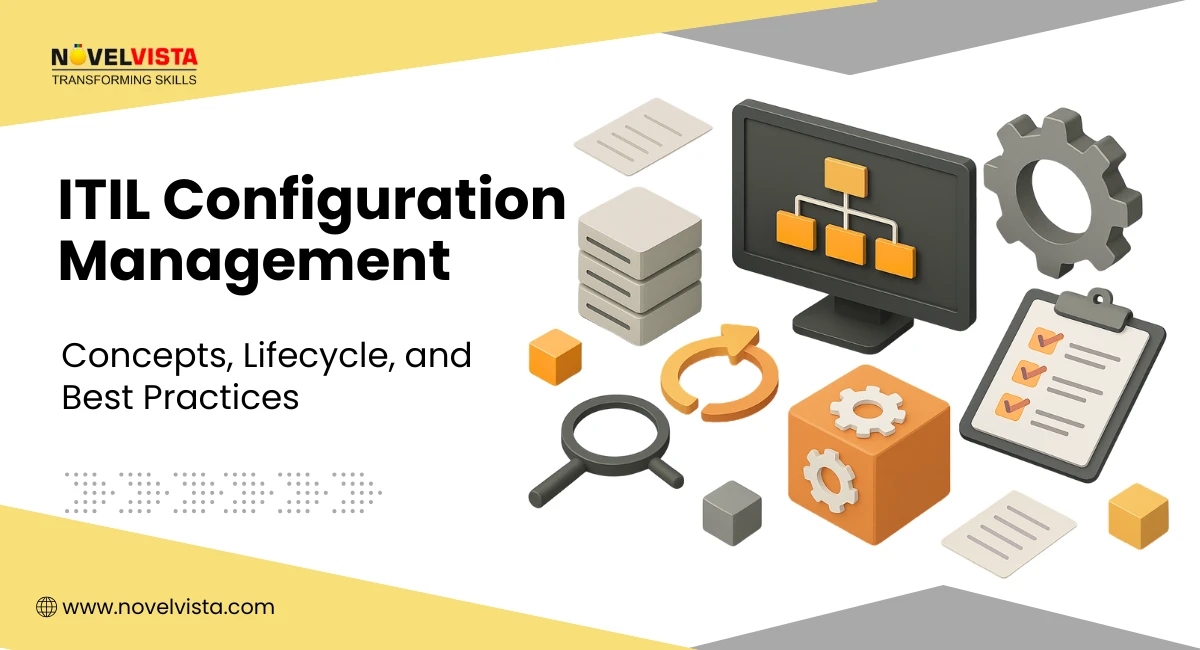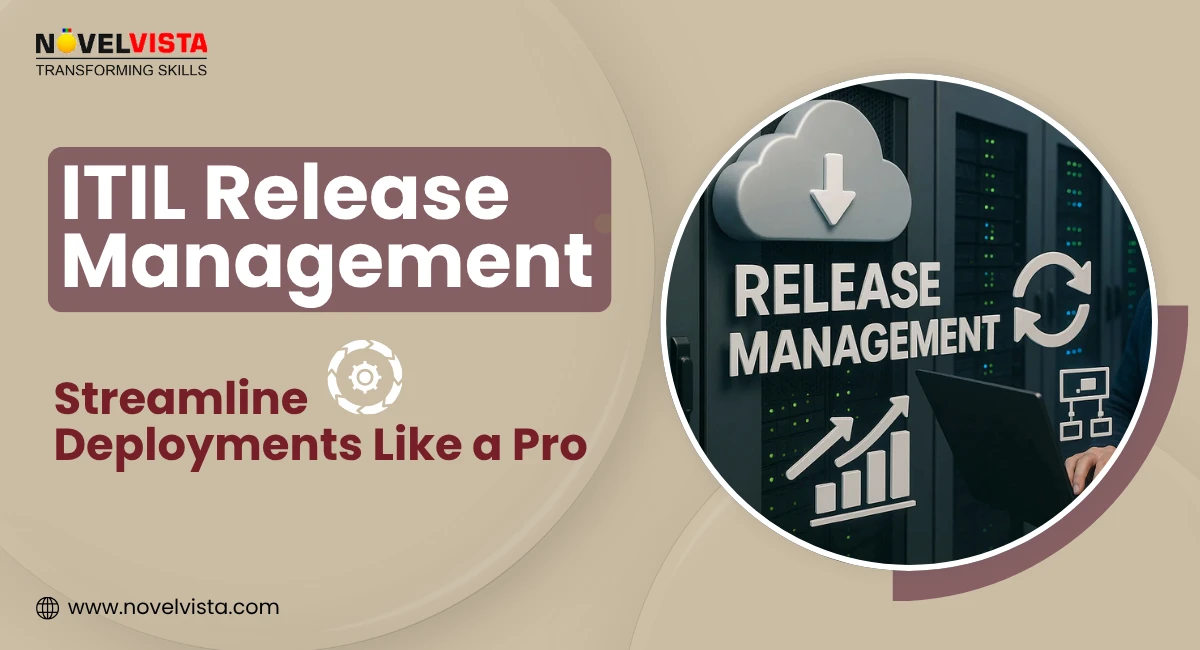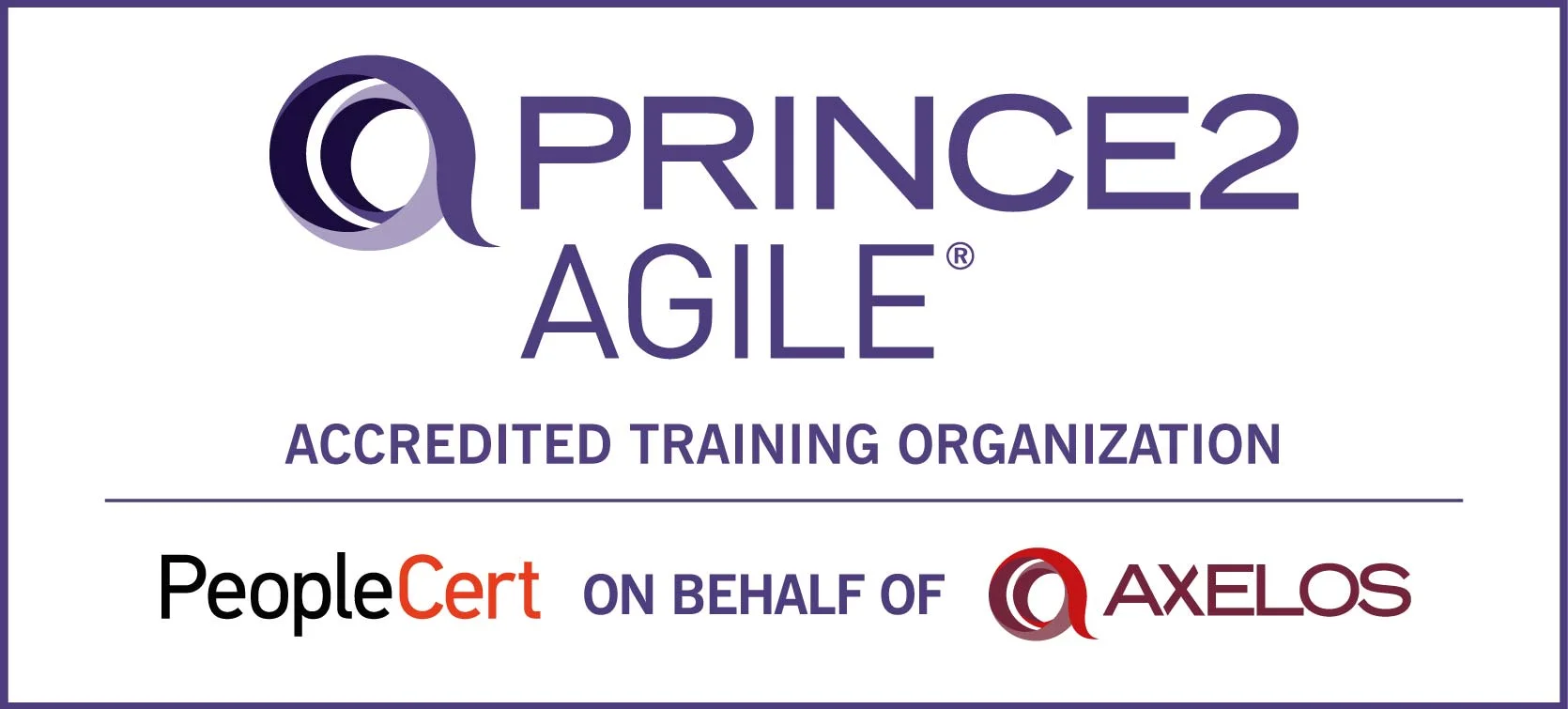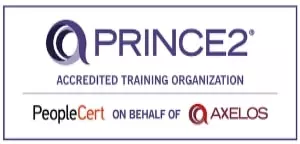- What Is ITIL Configuration Management?
- Key Concepts and Components of ITIL Configuration Management
- The ITIL Configuration Management Lifecycle Explained
- Real Business Benefits of ITIL Configuration Management
- ITIL Configuration Management Best Practices (With Examples)
- Why Configuration Management Is the Backbone of Reliable IT Operations
- Conclusion: Building IT Confidence Through Clarity
Introduction: Taming the IT Tangle
Most IT teams face the same nightmare — unexpected outages, undocumented assets, and endless guessing games about what connects to what.
Picture an engineer trying to fix a system outage but unsure if the issue came from a recent change, a missing component, or a dependency. That’s the daily chaos of unmanaged infrastructure.
ITIL Configuration Management exists to stop that chaos. It brings visibility, control, and accountability to every IT asset and relationship, ensuring that decisions are based on facts — not assumptions.
This guide walks you through everything:
- What Configuration Management in ITIL means
- How its lifecycle works
- The components that make it tick
- And the best practices to make it actually work in your environment
By the end, you’ll understand why Service Configuration Management ITIL 4 is more than documentation — it’s the foundation of resilient, reliable IT operations.
What Is ITIL Configuration Management?
At its core, ITIL Configuration Management is about knowing exactly what you have, how it’s connected, and how changes affect your IT environment.
In ITIL 4, this is known as Service Configuration Management (SCM) — a process that ensures accurate and reliable information about your IT assets and services is always available.
It involves identifying and recording all Configuration Items (CIs) — like servers, applications, databases, and even documents — and mapping how they relate to one another.
The process supports better decisions by providing:
- Visibility: A complete picture of the IT landscape
- Traceability: The ability to follow a change’s impact
- Control: Ensuring updates, upgrades, or replacements don’t cause unintended disruption
In short, Configuration Management ITIL is like your IT ecosystem’s blueprint — keeping teams aligned, informed, and confident in every action they take.
Key Concepts and Components of ITIL Configuration Management
Effective Configuration Management in ITIL relies on a few key building blocks that make it both structured and dynamic.
a. Configuration Item (CI)
A Configuration Item is any component that needs to be managed to deliver an IT service. This includes software, hardware, documentation, licenses, SLAs, and even people or processes. Each CI has attributes — like version, owner, and relationships — stored within a structured system.
b. Configuration Management Database (CMDB)
The ITIL Configuration Management Database is the heart of the process. It stores detailed information about every CI and its relationships. Think of it as a living, breathing map that evolves as your infrastructure changes. A well-maintained CMDB enables quick impact analysis, risk assessment, and faster root-cause identification during incidents.
c. Configuration Management System (CMS)
The Configuration Management System ITIL is a broader ecosystem that integrates multiple CMDBs, discovery tools, and dashboards. It consolidates data across environments — cloud, on-premises, hybrid — giving IT leaders a unified view of all configuration information.
d. Baselines and Snapshots
Baselines act as “frozen moments” of configuration states, allowing teams to compare current setups with known good versions. This helps identify unauthorized changes, deviations, and configuration drift — key for maintaining compliance.
e. Relationships and Dependencies
Relationships define how CIs interact — for example, which database supports which application. Mapping these dependencies helps teams predict the ripple effects of a change before it happens, reducing downtime risks.
Experienced ITSM practitioners recommend maintaining a "federated CMDB" approach — integrating multiple discovery tools (like ServiceNow Discovery, BMC Helix, or AWS Config) to ensure real-time accuracy. Reports highlight that organizations using automated CMDB updates achieve 40% faster incident resolution compared to manual systems.
Check Out: 20+ ITIL Software for Smarter ITSM Management
Download: ITIL Configuration Management Checklist
Build an audit-ready CMDB with ease.
Use this ITIL 4 checklist to implement and improve
Configuration Management.
The ITIL Configuration Management Lifecycle Explained
The Configuration Management ITIL lifecycle follows a structured flow that ensures every piece of configuration data is accurate, relevant, and maintained over time.
1. Planning
Define the scope, objectives, policies, and roles for your Configuration Management process. Decide what CIs to include, how data will be collected, and who will be responsible for updates.
2. Identification
Select and label all Configuration Items, assigning each a unique identifier. Record key attributes — such as version, location, and owner — to build a clear foundation for traceability.
3. Control
Ensure that changes to CIs are made only through approved processes. Every modification must be authorized, documented, and traceable to prevent unauthorized disruptions or inconsistencies.
4. Status Accounting
Maintain detailed records of every CI’s status and history over time. This includes versions, maintenance actions, and change history — enabling easy audits and performance reviews.
5. Verification and Audit
Regularly review and validate your CMDB and CMS data. Audits confirm that configuration information reflects the actual environment and aligns with compliance and governance standards.
Together, these lifecycle stages ensure Service Configuration Management ITIL 4 operates as a living system — continuously updated, trusted, and ready to support any change initiative.
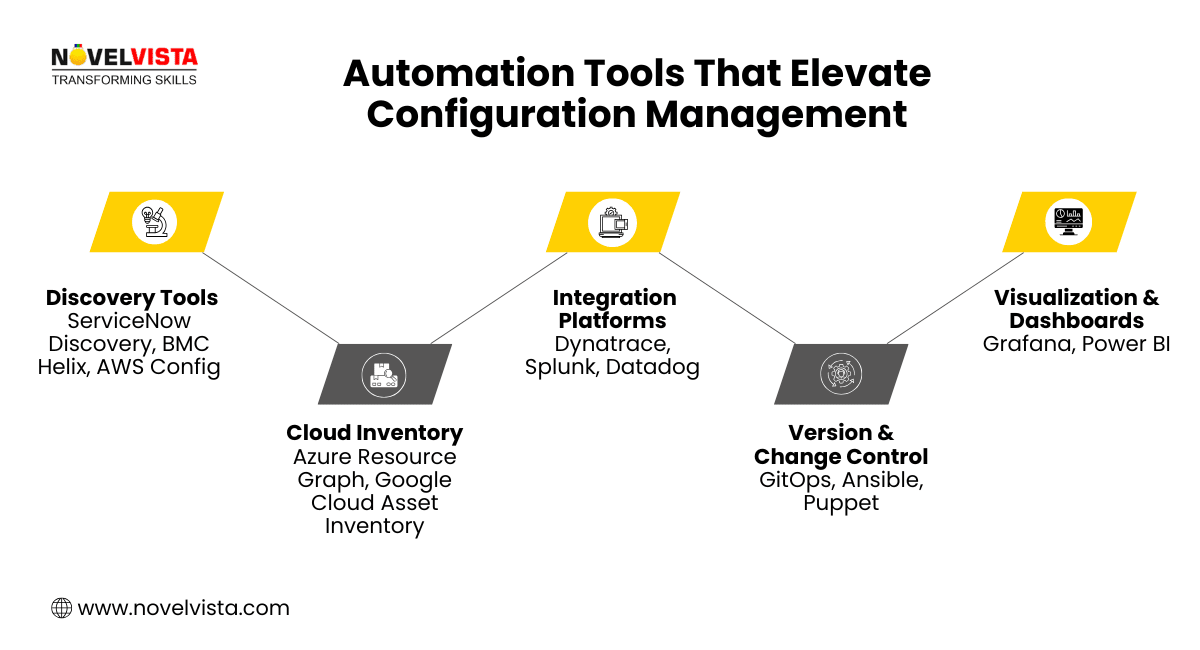
Real Business Benefits of ITIL Configuration Management
When implemented effectively, ITIL Configuration Management transforms how IT teams operate — from firefighting to foresight. It brings structure, speed, and stability to your IT operations.
Here’s how it adds real business value:
a. Enhanced Visibility
Get a single source of truth for all IT assets and services. Teams no longer rely on spreadsheets or guesswork — every configuration item and its relationship are mapped in real time.
b. Improved Change Management
Before approving a change, you can instantly see which systems or services it will affect. That means fewer failed deployments, minimized service disruptions, and faster approvals.
c. Faster Incident Resolution
With accurate configuration data, IT teams can pinpoint root causes quickly. Knowing what changed — and when — drastically reduces mean time to resolve (MTTR).
d. Risk Reduction and Compliance
Configuration baselines ensure every asset meets internal and external standards. Auditors can verify compliance faster, and IT leaders can prevent drift or unauthorized changes before they become incidents.
e. Cost Optimization
Duplicate assets, underutilized resources, and shadow IT can all be identified and eliminated. The result: leaner operations and better ROI from IT investments.
ITIL Configuration Management Best Practices (With Examples)
To truly unlock the power of Configuration Management, organizations must go beyond documentation — it’s about process maturity and cultural adoption.
Here are the top ITIL 4 Configuration Management best practices that deliver measurable results:
1. Start Small, Then Scale
Begin with a specific service or department before expanding enterprise-wide. This helps refine your process and tools without being overwhelmed by data complexity.
2. Define Clear Ownership
Every CI should have a responsible owner accountable for keeping its data accurate. Without ownership, your CMDB quickly becomes outdated and unreliable.
3. Automate Data Discovery and Updates
Leverage automation tools that integrate with cloud, DevOps, and monitoring platforms. This ensures your CMDB reflects reality — not last quarter’s configuration.
4. Keep Relationships Accurate
Map how components interact and depend on each other. Incomplete relationship mapping undermines impact analysis and weakens your change control processes.
5. Regular Audits and Governance
Schedule periodic audits and health checks of your CMDB. Consistency and compliance are impossible without ongoing validation and governance oversight.
6. Integrate with Other ITIL Processes
Configuration Management works best when aligned with Change, Incident, and Release Management. Cross-process integration creates an end-to-end view of IT performance and risk.
7. Focus on Data Quality
Collect only necessary, actionable information — not everything under the sun. Prioritize data accuracy and relevance over quantity to ensure usability and performance.
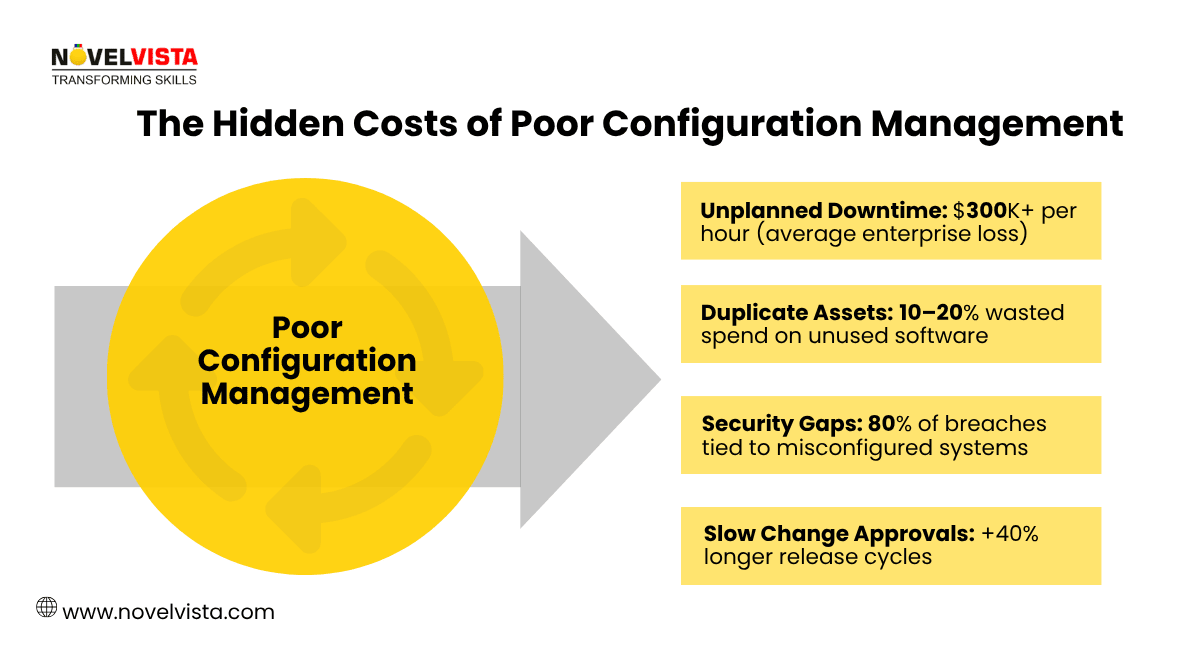
Why Configuration Management Is the Backbone of Reliable IT Operations
Imagine running a hospital, airline, or bank where no one knows how systems connect or which components are critical. That’s what IT operations without Configuration Management look like.
Service Configuration Management in ITIL 4 forms the foundation of digital reliability. It empowers teams to make confident, data-driven decisions and adapt quickly to change.
Here’s why it’s indispensable:
- Supports Change Management: Ensures every modification is assessed for risk before implementation.
- Enables Service Continuity: Keeps disaster recovery and resilience strategies accurate and executable.
- Improves Collaboration: Provides shared visibility across IT, DevOps, and business functions.
- Drives Continuous Improvement: Accurate configuration data fuels analytics, helping identify weak spots and efficiency gains.
In an age where agility and uptime are everything, Configuration Management ITIL is not just a support process — it’s the backbone of operational excellence.
Conclusion: Building IT Confidence Through Clarity
Organizations often underestimate how much chaos comes from poor visibility. Without Configuration Management, every outage, upgrade, and deployment becomes a gamble.
But by implementing ITIL Configuration Management, you gain a strategic advantage — one rooted in knowledge, not assumption.
It ensures every asset, dependency, and version is tracked, verified, and governed with precision.
When teams have a reliable map of their IT landscape, decisions become faster, changes become safer, and incidents become less frequent.
That’s the difference between IT that reacts and IT that leads.
Start with your first Configuration Management plan today — and build a foundation that keeps your IT stable, scalable, and always ready for what’s next.
Next Step: Advance Your ITSM Journey with NovelVista
Ready to put ITIL Configuration Management into action? Take the next step with NovelVista’s ITIL 4 Foundation Certification Training.
Gain hands-on skills, real-world case studies, and expert-led guidance to build a strong foundation in ITSM. Whether you’re aiming to boost your career or improve your organization’s service delivery, this training helps you master ITIL 4 principles with practical, results-driven learning.
Frequently Asked Questions
Author Details

Mr.Vikas Sharma
Principal Consultant
I am an Accredited ITIL, ITIL 4, ITIL 4 DITS, ITIL® 4 Strategic Leader, Certified SAFe Practice Consultant , SIAM Professional, PRINCE2 AGILE, Six Sigma Black Belt Trainer with more than 20 years of Industry experience. Working as SIAM consultant managing end-to-end accountability for the performance and delivery of IT services to the users and coordinating delivery, integration, and interoperability across multiple services and suppliers. Trained more than 10000+ participants under various ITSM, Agile & Project Management frameworks like ITIL, SAFe, SIAM, VeriSM, and PRINCE2, Scrum, DevOps, Cloud, etc.
Course Related To This blog
ITIL4 Specialist Monitor Support and Fulfil Certification
ITIL4 Specialist Acquiring & Managing Cloud Services
ITIL® 4 Specialist Drive Stakeholder Value
ITIL® 4 Specialist High Velocity IT
ITIL® 4 Specialist Create Deliver & Support
ITIL® 4 Foundation Certification
Confused About Certification?
Get Free Consultation Call

